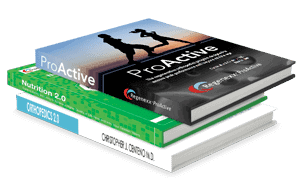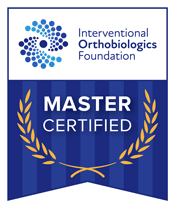PLATELET-RICH PLASMA
Get back to doing what you love, without surgery
Tendons and ligaments connect muscles to bones, making it possible to do all kinds of physical activities. Overuse or damage to tendons over a long period of time causes the collagen fibers that make up the tendons to form small tears, a condition called Tendinosis. Ligaments are composed of collagen fibers and hold bones together, stabilize joints and control range of motion. Tendons and ligaments have poor blood supply, and they do not easily heal from the damage caused by sprains, strains, and repetitive motion.
What is PRP?
Platelet Rich Plasma, or PRP is blood plasma with concentrated platelets (the body’s repairmen for damaged tissue). The concentrated platelets found in PRP contain huge reservoirs of bioactive proteins, including growth factors that are vital to initiate and accelerate tissue repair and regeneration. These bioactive proteins initiate connective tissue healing, bone regeneration, and repair, promote development of new blood vessels, and stimulate the wound healing process.
Why does PRP work?
Platelets are a specialized type of blood cell. Blood is made up of 93% red cells (RBCs), 6% platelets, 1% white blood cells (WBCs), and plasma.
Most people associate platelets with clot formation. While that certainly is an important function of platelets, they are also very much involved in injury healing. Human platelets are naturally extremely rich in connective tissue growth factors. Injecting these growth factors into damaged ligaments, tendons, and joints stimulates a natural repair process. But in order to benefit from these natural healing proteins, the platelets must first be concentrated. In other words, PRP recreates and stimulates the body’s natural healing process.
How is PRP done?
To prepare PRP, a small amount of blood is taken from the patient. The blood is then placed in a centrifuge. The centrifuge spins and automatically produces the PRP, which is then injected directly into the center of the injury. Ultrasound guidance is used to monitor the position of the instrument and visualize the injury. The entire process to prepare your blood takes less than 15 minutes and increases the concentration of platelets and growth factors at the site of injury up to 500%. The entire procedure, from blood draw, to solution preparation, to injection, takes 30-40 minutes.
I’ve heard of Cortisone shots; is this the same?
Studies have shown that cortisone injections may actually weaken tissue. Cortisone shots may provide a quick fix for temporary relief and lessening of inflammation, but the doctor can only do them a few times in any area because of this tissue weakening effect. They do not generally provide long term healing. PRP therapy is healing and strengthening for these tendons and ligaments. Procedures with PRP has strengthened and thickened tendons up to 40%.
How often are injections given?
After the initial procedure, a follow up visit is scheduled 6-8 weeks later to check on healing progress. Some patients respond very well to just one procedure. However, 2-3 procedures may be necessary.
What conditions benefit from PRP?
PRP procedure works best for chronic ligament and tendon sprains/strains that have failed other conservative procedure, including:
- Rotator cuff injuries
- Shoulder pain and instability
- Tennis & golfer’s elbow
- Hamstring and hip strains
- Knee sprains and instability
- Patellofemoral syndrome and patellar tendinosis
- Ankle sprains
- Achilles tendinosis & plantar fasciitis
- Knee, hip, and other joint osteoarthritis
- Other chronic tendon and ligament problems
In addition, PRP can be very helpful for many cases of osteoarthritis (the “wear & tear” kind). PRP can help stimulate a “smoothing over” of the roughened and arthritic cartilage, reducing the pain and disability of arthritis. This includes:
- Knee arthritis
- Hip joint arthritis
- And other joint arthritis
Is PRP covered by insurance?
Most insurance plans, including Medicare, do NOT pay for PRP injections.
Do PRP injections hurt?
Because the injured area is first anesthetized with lidocaine, the actual injections are only mildly to moderately uncomfortable. Once the lidocaine wears off in a few hours, there is usually moderate pain for the next few days. For the first week after the injections it is critical to avoid anti-inflammatory medications, including Advil, Motrin, ibuprofen, and Aleve. These will interfere with the healing response. Tylenol is OK. Your doctor may prescribe pain medication also.
Are there risks with PRP?
Anytime a needle is placed anywhere in the body, even getting blood drawn, there is a risk of infection, bleeding, and nerve damage. However, these are very rare. Other complications, though rare, can occur depending on the area being treated, and will be discussed by your doctor before starting procedure. Because PRP uses your own blood, you cannot be allergic to it.
What is the success rate?
Studies suggest an improvement of 80-85%. Some patients experience complete relief of their pain. The results are generally permanent.
Additional Therapies
To get maximum benefit from the procedure, and to help prevent re-injury, a comprehensive and individualized procedure plan incorporating nutrition, nutraceuticals, exercise, and hormone balancing should be followed to get maximum benefit. This helps the newly developing connective tissue mature into healthy and strong tendon or ligament fibers.
What conditions benefit from PRP?
PRP procedure works best for chronic ligament and tendon sprains/strains that have failed other conservative procedure, including:
- Rotator cuff injuries
- Shoulder pain and instability
- Tennis & golfer’s elbow
- Hamstring and hip strains
- Knee sprains and instability
- Patellofemoral syndrome and patellar tendinosis
- Ankle sprains
- Achilles tendinosis & plantar fasciitis
- Knee, hip, and other joint osteoarthritis
- Other chronic tendon and ligament problems
In addition, PRP can be very helpful for many cases of osteoarthritis (the “wear & tear” kind). PRP can help stimulate a “smoothing over” of the roughened and arthritic cartilage, reducing the pain and disability of arthritis. This includes:
- Knee arthritis
- Hip joint arthritis
- And other joint arthritis
Is PRP covered by insurance?
Most insurance plans, including Medicare, do NOT pay for PRP injections.
Do PRP injections hurt?
Because the injured area is first anesthetized with lidocaine, the actual injections are only mildly to moderately uncomfortable. Once the lidocaine wears off in a few hours, there is usually moderate pain for the next few days. For the first week after the injections it is critical to avoid anti-inflammatory medications, including Advil, Motrin, ibuprofen, and Aleve. These will interfere with the healing response. Tylenol is OK. Your doctor may prescribe pain medication also.
Are there risks with PRP?
Anytime a needle is placed anywhere in the body, even getting blood drawn, there is a risk of infection, bleeding, and nerve damage. However, these are very rare. Other complications, though rare, can occur depending on the area being treated, and will be discussed by your doctor before starting procedure. Because PRP uses your own blood, you cannot be allergic to it.
What is the success rate?
Studies suggest an improvement of 80-85%. Some patients experience complete relief of their pain. The results are generally permanent.
Additional Therapies
To get maximum benefit from the procedure, and to help prevent re-injury, a comprehensive and individualized procedure plan incorporating nutrition, nutraceuticals, exercise, and hormone balancing should be followed to get maximum benefit. This helps the newly developing connective tissue mature into healthy and strong tendon or ligament fibers.




